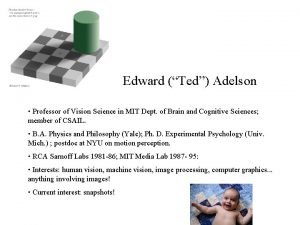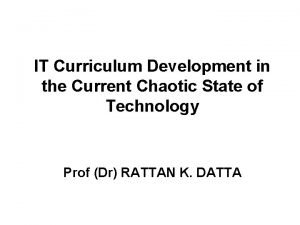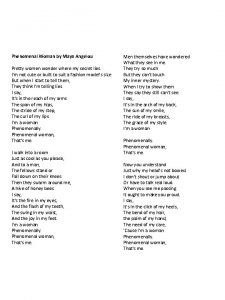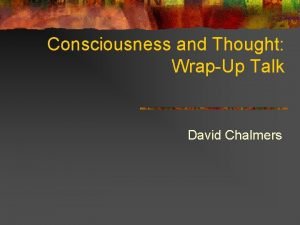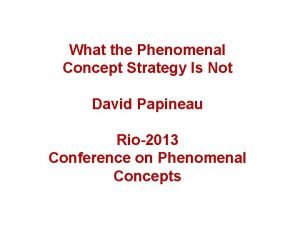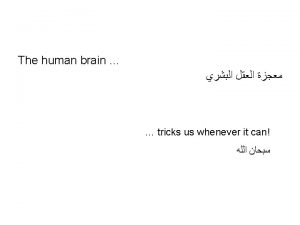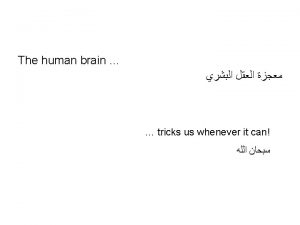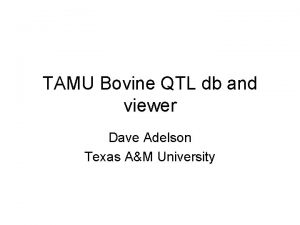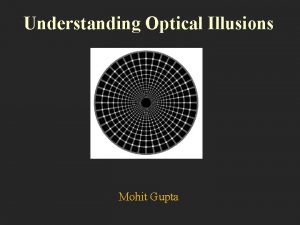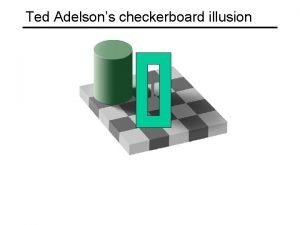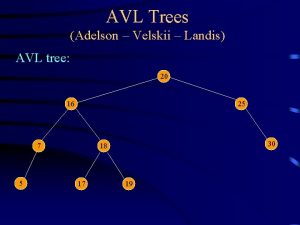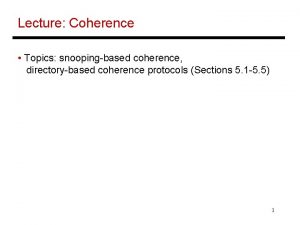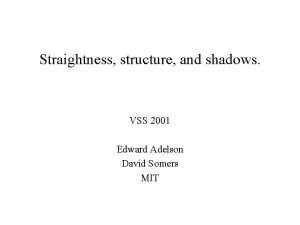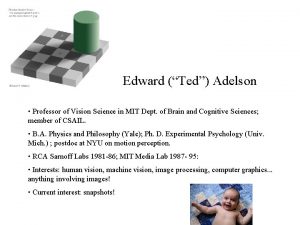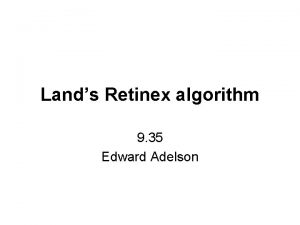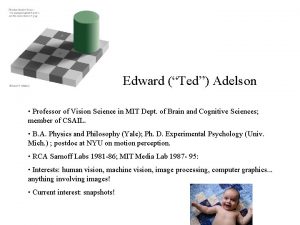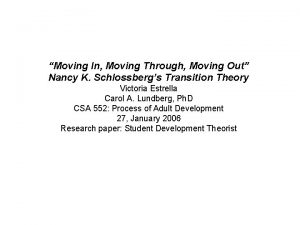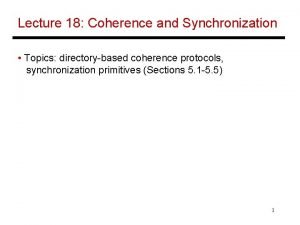Phenomenal Coherence of Moving Visual Patterns Edward Adelson











- Slides: 11

Phenomenal Coherence of Moving Visual Patterns Edward Adelson & Anthony Movshon

Question Is the aperture problem solved by a two-step system of motion detection?

Alternatives l Yes, the two-step model is the solution. l No: Its somehow solved otherwise l No: Its not a problem to begin with

Logic l If there are two levels of motion detection, we might be able to create some stimuli in which the second level is active and some in which it is not. l The activity of the second level is apparent in stimuli where the aperture problem is resolved. l By studying the properties of the stimuli that are perceived as resolved vs. nonresolved, we can infer the properties of the second level.

Methods l Subjects were presented with “plaid” stimuli that consisted of two moving sinusoidal gratings. l One of the gratings varied systematically in contrast and spatial frequency. l Subjects were asked to indicate if the percept was coherent or transparent.

Methods – details l l l Subjects were asked to not make a judgment unless their eyes were fixated on a small black circle in the middle of the display. After each 1. 5 -s exposure, the observer indicated whether the pattern appeared ‘coherent’ or ‘incoherent’. Stimuli were 5 deg, presented on a CRT, controlled by a PDP 11

Results l l Two gratings that are sliding over each other are often seen as moving coherently in one, not two directions (b). This common direction is best described as the “intersection of constraints” not the vector average (c).

Results l l l Increasing the contrast of one of the gratings makes it more likely that it is perceived (open circles) Increasing the contrast further makes the percept monotonically more and more coherent. Contrast affects coherence beyond mere visibility.

Results l l l Utilizing this contrast dependence, the authors recorded under which conditions of “added” contrast, they could get 50% coherence. As it turns out, the larger the difference in spatial frequency between the gratings is, the more contrast needs to be added. Mechanism of coherence detection is SF dependent.

Interpretation l l l This leads to a two-step model: At a first level, oriented and SF-dependent neurons in V 1 sample the local motion of an object, extracting the motion perpendicular to the contours. At a second level, this information is integrated by MT neurons that perform a Intersection of Contraints computation on the component vectors.

Problems 1. 2. 3. The data is consistent with this notion, but is so indirect that it does not offer concrete proof that MT plays a part in second stage processing. Experiments done in human whereas all physiology on MT done in monkeys (as of 1982). There were only two subjects
 Edward adelson
Edward adelson Phenomenal memory
Phenomenal memory Phenomenal woman dance
Phenomenal woman dance Phenomenal intentionality
Phenomenal intentionality Phenomenal concept strategy
Phenomenal concept strategy The phenomenal power of the human mind
The phenomenal power of the human mind Phenomenal power of human mind
Phenomenal power of human mind Dave adelson
Dave adelson Adelson's checkerboard
Adelson's checkerboard Rotating snakes illusion
Rotating snakes illusion Adelson velsky landis
Adelson velsky landis Contemporary dating patterns are formal patterns
Contemporary dating patterns are formal patterns
